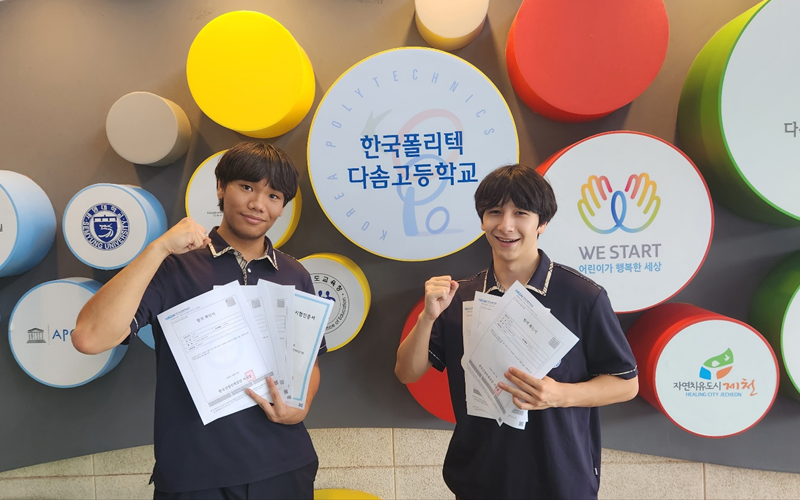Information Center
- Main page
- Information Center
- Government News
Government News
- Source
- korea.net
- Date
- 2025.07.03

National population diversity in race, religion and culture grew nearly 8% from 2018-22. Shown are multicultural students at Dasom High School in Jecheon, Chungcheongbuk-do Province, posing for a photo while holding their national certificates of technical qualification. (Ministry of Employment and Labor)
By Kim Seon Ah
National population diversity in race, religion and culture grew nearly 8% from 2018-22.
A study conducted by the Korea Institute for Health and Social Affairs released on July 2 said the national population diversity index rose 7.79% from 0.0527 to 0.0568 over the five-year period.
The index "expresses in numbers the extent to which the population of a region or group is located between complete homogeneity (0) and complete heterogeneity (1)."
This research calculated the degree of heterogeneity using the Blau index, which gauges diversity or heterogeneity within a group, based on administrative data such as the 2018-22 census. The closer the Blau index is to 1, the more diverse the population is.
By region, Incheon led such growth with 21.96% as its diversity index grew from 0.0592 to 0.0722, followed by Daejeon (17.67%), the provinces of Jeollanam-do (17.5%), Jeollabuk-do (16.94%) and Gangwon-do (13.65%), and Daegu (13.64%). Sejong, however, saw its figure fall 9.49% and Seoul's dipped 0.92%.
Due to the country's low birth rate and immigration policy, the diversity index of children under age 6 also soared about 45% from 0.0419 in 2018 to 0.0609 in 2022.
"In both 2018 and 2022, the index was highest in southwestern Gyeonggi-do (Province), Gimpo, Pocheon and southwestern Seoul," the research team said. "We also confirmed that foreign workers and marriage immigrants are concentrated in agro-industrial complexes and rural areas."
sofiakim218@korea.kr
- Next
- No following post exists.